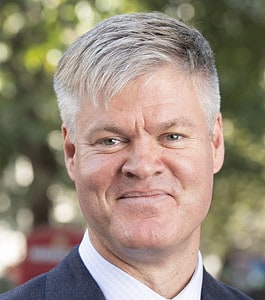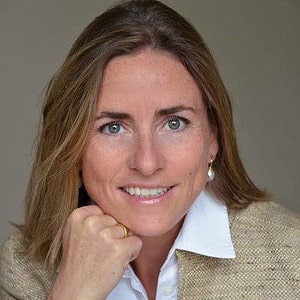Central bank tightening in most large economies has enabled commercial banks to raise their lending rates, swelling interest income. That propelled a $280 billion profit increase for the global industry in 2022, according to McKinsey. This year should be another good one: Return on equity is expected to reach 13%, compared with an average of 9% since 2010. “The past 18 months have been the best period for global banking overall since at least 2007,” McKinsey consultants conclude in their Global Banking Annual Review 2023. “A favorable wind now seems to have returned to the industry’s sails.”
But the bank failures of the past year illustrate that change can increase risk as well as opportunity. Bank balance sheets remain stuffed with low-interest bonds that are money losers since rates rose dramatically in the US, eurozone, and elsewhere. Such “credit mismatches” helped sink three large US regional banks—Silicon Valley Bank (SVB), Signature Bank, and First Republic Bank—in rapid succession earlier this year.
More might have followed without adroit rescues by the Fed and other regulators, says David Aikman, director of the Qatar Centre for Global Banking and professor of finance at King’s Business School in London. “It looks like there wasn’t enough resilience to rising interest rates in big chunks of the US banking system,” he says. “We would have seen more-widespread contagion had the Fed not stepped in so aggressively.”

The longer higher rates persist, the more they become a challenge, and they may be here for a while. Speaking at Jackson Hole in August, Jerome Powell, chairman of the Federal Reserve (the Fed), predicted an extended period of higher interest rates, which has been characterized as “higher for longer.” Depositors are shaking off their lethargy and demanding higher returns, squeezing those net interest margins. Borrowers look increasingly shaky as economies slow, forcing banks to curtail lending, bolster loan-loss provisions, and hoard capital. Loan growth in the US will slow to 2% this year from 9% in 2022, projects Amit Vora, global head of credit and lending solutions at CRISIL, a division of S&P Global. That’s slamming on the brakes, not tapping them.
Furthermore, aggressive action to ensure safety will cost the banking system. The Fed and other US authorities have proposed new capital requirements that could wipe out $118 billion in excess tier 1 capital that the biggest banks have built up. The proposals would also widen the top regulatory tier from $250 billion down to $100 billion in assets.
“Regulatory requirements, including capital requirements, must be aligned with actual risk, so that banks bear the responsibility for their own risk-taking,” the Fed’s vice chair for supervision, Michael Barr, said in an accompanying statement. Additional highlights of the US proposals, unveiled in July, include booking losses on securities still in the portfolio (all those out-of-the-money bonds) and raising the risk weighting of numerous assets.
Additional Pressures: Regulation and New Competitors
Banks in Europe face new regulations that will prevent them from taking certain commissions from asset managers or insurers whose investment products the banks recommend to customers. That ban could wipe out a quarter of banks’ investment fee income once it takes effect in 2026, says Jens Baumgarten, senior partner in financial services at German consultancy Simon-Kucher & Partners. “They have to find ways to generate sustainable fee income again,” he says.
Longer term, banks are losing out to other intermediaries in the competition for new capital. The threat from online startup “neobanks” has somewhat faded. Many of the upstarts have failed or slowed down as both debt and equity capital dried up. The threat from other nonbank financial institutions—insurance companies, pension funds, sovereign wealth funds, and private credit—is only growing. These alternatives siphoned off “more than 70% of the net increase of financial funds” in the US from 2015 to 2022, McKinsey reports. “The traditional core of the banking sector—the balance sheet—now finds itself at a tipping point,” the consultancy concludes.
The acceleration of artificial intelligence (AI) through ChatGPT-style generative AI is a wild card. McKinsey emphasizes the new technology’s potential for cutting back-office expenses. “Generative AI could be a game changer, lifting productivity by 3% to 5% ,” McKinsey estimates. Baumgarten focuses more on individualizing customer relationships to drive engagement. One example: “When I board the plane for a ski trip, my banks can send me an email offering additional accident insurance.”

But the AI race could also set off a new Darwinian phase in banking, says Alexandra Mousavizadeh, co-founder and CEO of Evident, a London-based consultancy on AI issues. Big banks, particularly in North America, have a lead that smaller rivals will find hard to erase.“I don’t see how this isn’t going to lead to massive consolidation in the banking sector,” she says.
Emerging Market Optimism
In a historic turnaround, banks in emerging markets, China excepted, have turned into a source of stability and optimism for the global financial system. They have more room to grow than peers in developed markets. Expanding middle classes are gobbling basic financial products like mortgages and retirement savings. Mobile internet is reaching hundreds of millions of customers who have never used banks at all. Yet large, vibrant economies from Mexico to Indonesia and the Philippines remain close to 50% unbanked.
Emerging markets regulators, burnt by past crises, keep capital requirements high and competition limited. India, for instance, has 34 licensed banks—the US, more than 4,000. “Emerging markets bank like your grandfather did,” says Richard Schmidt, emerging markets portfolio manager at US-based asset manager Harding Loevner. “They take in deposits and put out loans.”
McKinsey coins a new phrase in its 2023 banking survey: “Indo-Crescent Region,” an arc of financial health that stretches from Singapore across the Indian Ocean to the Gulf Arab states and down the eastern coast of Africa to Mozambique. This region is raking in capital fleeing wartime Russia and Ukraine. Fully half of the world’s best-performing banks are Indo-Crescent domiciled, McKinsey finds. Expected annual revenue growth this decade ranges from 6% in Singapore and others, to 9% in the United Arab Emirates.
The Indo Crescent accounts for just 8% of global banking assets, however. Much of the other 92% looks to be sailing into heavier weather. “We’re not heading for a ‘big bang’ like the 2008 global crisis,” Simon-Kucher’s Baumgarten asserts. “We are going into a cautious economic phase that could last a few years.”
Banks in North America and Europe are acting accordingly. Almost two-thirds of US banks with assets of $10 billion or more increased provisions in the second quarter of 2023, an S&P Global survey found. Bank CFOs are also piling up cash, more than $3 trillion at US institutions alone, CRISIL’s Vora reports. “Lifting liquidity is a focus for many of them now,” he says. Cash cushions can hide those holdings of low-yielding, pre-inflation bonds, whose diminished value helped sink SVB and others, he adds.
Savers are demanding higher returns on their deposits, which means less interest-rate windfall for banks going forward. The average rate in the euro area for “new deposits with agreed maturity” has jumped from near zero to 3% this year, the European Central Bank reports. US banks are still paying less than 2% for one-year certificates of deposit on average, but a host of online upstarts offer more than 5%. “Everyone knows that the tailwinds from interest rate hikes can end pretty quickly, especially when customers grow more sensitive on the rate differences and start shifting their funds more actively, ” Baumgarten says.
Big Asia Wobbles
Then there’s China. Banks have long been presumed insulated from the No. 2 economy’s ups and downs, thanks to state ownership and enormous balance sheets. But that’s a safe bet only for the Big Four—Industrial and Commercial Bank of China, China Construction Bank, Agricultural Bank of China, and Bank of China—which control about 40% of the system’s assets, says Logan Wright, head of China Markets research at the Rhodium Group consultancy.
Trouble is brewing at the municipal banks that account for another third. These institutions, linked formally or informally to local politicians, are heavily exposed to local-government funding vehicles—nonfinancial state-owned enterprises that focus on infrastructure development to sponsor local economic growth but tend to have very weak credit profiles—largely supported by land sales. The land sales have crashed as overleveraged property developers stopped buying, transmitting financial shocks backward along the train.
Forecasting how numerous and severe these shocks may be could involve a lot of guesswork, given Beijing’s preference for secrecy and accentuating the positive in economic news. Five rural banks collapsed last year in Henan and Anhui provinces, and that’s unlikely to be the end of it. “It’s a slow-motion financial crisis,” Wright says.
The central government guarantees retail deposits up to 500,000 renminbi (about $68,000). Otherwise, its rescue plans are fuzzy. Xi Jinping’s team is wary of writing a blank bailout check for the municipal banks, given suspicions of dodgy transactions related to their local governments, Wright says. “Do you want to bail out all these localities?” he asks rhetorically. “Probably not. We’re not seeing a coherent strategy at this point.” The good thing about China’s slow-motion financial crisis is that it’s staying in China, with little if any international contagion.
Few But Strong In India
Banks in India, the emerging megastate, are on an opposite, positive trajectory. India looked to be lurching into its own slow-motion crisis five years ago. Nonperforming loans in the banking system, which is two-thirds state-controlled, peaked at over 11% in 2018, stressed assets at 14%. Yes Bank, one of the biggest private institutions, collapsed in early 2020, packed with dud credits to a few favored conglomerates.
Tighter regulation and economic growth—annual GDP expansion has topped 6% since the pandemic dip—have cut those NPL ratios in half. Private Indian banks like HDFC and ICICI have become global investor favorites, feasting off an expanding middle class with minimal exposure to state enterprises.
It doesn’t hurt that the government has not granted a new banking license in 30 years, says Amit Anand, co-founder of NextFins, which runs an exchange-traded fund for Indian bank stocks. Limited competition makes for hefty, well-protected interest margins. “The cool thing about Indian banks is they are really profitable, with net interest income around 4%,” he says.
Real Estate Still Shaky Ground
Commercial real estate loans are a global concern, as high office-vacancy rates combined with spiking interest costs put pressure on borrowers. The risk is particularly concentrated on smaller US banks. Institutions with less than $100 billion in assets average 14.4% exposure to commercial real estate, compared to 2.9% for the “systemically important” giants, according to Fitch Ratings. Nearly 600 US institutions exceed regulatory guidance on the proportion of their balance sheet tied up with the sector.

There are mitigating factors. Office buildings account for just 14% of US commercial real estate assets, according to a JP Morgan report. Other subsectors, such as warehouses, are benefiting from the same work- and shop-from-home trends that are reducing demand for office (and physical retail) space. Still, the analysts see “questions about smaller banks and the credit they provide to the broader economy.”
One area where global banks won’t want to pull back is technology investment, as the race for AI supremacy starts in earnest. Evident’s Mousavizadeh is not actually a fan of generative AI, at least in its current ChatGPT form. “GenAI is not great for banks, because it makes so many mistakes,” she says. Nonetheless, “Organizations that win on AI will surge ahead of their rivals on growth, productivity, and financial performance,” she predicts.
The early surge is dominated by North American giants who have been quietly building up internal AI labs for years. Switzerland’s UBS is the only European house to crack the top six in the 2023 Evident AI Index. JP Morgan Chase is at the top, followed by Royal Bank of Canada, Citigroup, Wells Fargo, and Toronto-Dominion Bank. JP Morgan already has 6,000 use cases for AI; euro area champion BNP Paribas has 2,000, Mousavizadeh estimates.
The banking disturbances of 2023 are a far cry from the years following 2008, when leading institutions around the world ran for government bailouts and more than 400 banks disappeared within five years in the US alone. Bankers and regulators have learned at least some of the lessons from that disaster, which the financial sector inflicted on itself and everyone else.
But there’s only so much protection the industry can build against the fallout from the fastest interest rate increases in 40 years. Higher for a little while was a boon for bankers, higher for longer probably not so much. “It’s all really contingent on the path of rates,” King’s College professor Aikman says. “If we get back to a world of lower rates soon, then debt stocks are manageable.”
If not, watch out.




